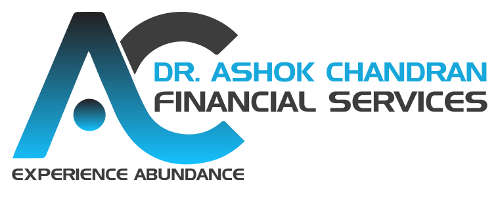Friday, June 6 2025
Source/Contribution by : NJ Publications
Medical treatments are becoming more expensive and sophisticated, meaning the cost of hospitalization, diagnostics and daycare procedures are creeping upward. It would be more logical if your coverage could also increase alongside these rising costs, without you having to shell out huge premiums?
No Claim Bonus (NCB) and Guaranteed Cumulative Bonus (GCB) are two powerful, yet often overlooked features of a health insurance policy. Both reward you for staying healthy-either by not making claims or simply by renewing your plan-allowing your sum insured to grow beyond its original risk cover amount (base sum insured). Over time, these bonuses can double, triple, five/ten fold your protection, offering a growing financial safety net just when you need it most.
In this article, we'll explore:
-
Exactly what NCB and GCB are
-
How they work, with real-life examples
-
Why this is important
-
Tips to maximize your bonus-driven cover growth
1. What Are NCB and GCB?
No Claim Bonus (NCB) - NCB is essentially a "reward for not taking claims" If you complete a full policy year without filing any claims, your insurer acknowledges your low-risk profile by either:
-
Discounting your renewal premium, or
-
Adding a percentage of the base sum insured to your coverage-at no extra cost.
Early versions of NCB focused on premium rebates (typically 5-10% per claim-free year). Today, most plans use NCB to increase your actual protection. For instance, a 50% NCB on a ₹5 lakh policy adds ₹250,000 to your sum insured upon renewal-turning it into a ₹7.5 lakh policy for the same premium you already pay. If you go claim-free again next year, you earn another 50% on ₹7.5 lakhs, taking you to ₹10 lakhs in coverage.
Guaranteed Cumulative Bonus (GCB) - GCB takes the "claim-free" requirement off the table. Whether or not you lodge any claims, every renewal brings a fixed percentage increase (often 10-20%) to your sum insured-again, without extra premium. This guarantees a steadily rising coverage floor, which is especially useful if you anticipate needing treatment but still want the comfort of growing protection.
2. How They Work-Real-Life Scenarios
Example where policy provides NCB: The Sharma family bought their health insurance policy with a ₹5 lakh sum insured capped at 200% of the base sum insured.
Year 1 (No Claims)
-
Base cover: ₹5 lakhs
-
NCB earned: 50% → +₹250,000
-
Renewed cover: ₹7.5 lakhs
Year 2 (Claim)
-
They filed a ₹120,000 claim for a surgery.
-
Due to this claim, their accumulated NCB wasn’t lost-just reduced by 50%.
-
Renewed cover: ₹5 lakhs
Year 3 (No Claims)
-
NCB earned: 50% → +₹250,000
-
Renewed cover: ₹7.5 lakhs
Thanks to the NCB, the health insurance policy of Sharma's simply kept growing their cover after managed claims.
Example where policy provides NCB: Mr. Patel, a 50-year-old, wants his coverage to expand over time irrespective of him taking claims. He bought a plan with a guaranteed 25% GCB, capped at 500% of the base sum insured.
Policy Timeline
-
Year 1 renewed: ₹5 lakhs → +25% = ₹6.25 lakhs
-
Year 2 renewed: ₹6.25 lakhs → +25% = ₹7.5 lakhs
-
Year 3 (Hospitalisation claimed): Despite a ₹2 lakhs claim, GCB still kicks in → ₹7.5 lakhs → +25% = ₹8.75 lakhs
By Year 5, Mr. Patel's coverage doubles to ₹10 Lacs and by year 10, coverage becomes 4 times - meaning his ₹5 lakh plan now offers ₹20 lakhs of protection, regardless of claims taken.
Why This is Important
-
Free Coverage Increases - Every percentage point of NCB or GCB translates into more protection at zero extra premium. Over a 5-year span, you could add ₹10 lakhs or more to a ₹50 lakh policy, effectively increasing your safety net without amplifying your premiums.
-
Rising Medical Costs - Medical inflation in India is approx 12 - 14% annually-much higher than general inflation. Bonus-driven increases help your coverage keep pace, ensuring you aren't left underinsured when treatment costs surge.
-
Cushion Against Big Bills - Whether it's a complex cardiac procedure or extended ICU stay, having a larger sum insured can be the difference between manageable out of pocket expenses and a huge debt.
-
Encouragement for Healthy Living - Knowing that claim-free years translate directly into higher cover provides a powerful incentive for preventive care: regular check-ups, healthier diets, and early intervention. In other words, bonus schemes not only protect your wallet but also reinforce better health habits.
Things to Watch Out For
-
Maximum Limits - Most NCB schemes cap at 100% - 200% of your base sum insured; beyond that, no further bonus accrues. Ensure you know your plan's maximum cover limit.
-
Claim-Impact on NCB - If you anticipate needing occasional claims, consider plans that preserve some or all of your bonus.
-
Premium Revisions - Although NCB/GCB adds free cover, due to factors like age, region and medical inflation - insurers may still revise base premiums after approval from the regulator IRDAI.
-
Consult an insurance expert: A consultation with a qualified insurance professional can help you understand the nuances of the bonus features, identify additional add-ons/riders, and customize a plan that aligns perfectly with your medical requirements and financial goals.
Conclusion
No Claim Bonus(NCB) and Guaranteed Cumulative Bonus(GCB) are more than just policy features. They're strategic levers that let you build progressively stronger health protection, without proportionally higher premiums. By understanding how these features work-and picking plans with generous bonus rates and sensible sum insured bonus limits-you can turn disciplined health management into real financial security.
Harness the power of NCB and GCB to let your coverage grow alongside you-so that, when life's medical challenges arise, you'll be armed with far more than just hope: you'll have a steadily expanding safety net.
Empower your health journey today-because a proactive approach to insurance can pay dividends in both peace of mind and financial security.






